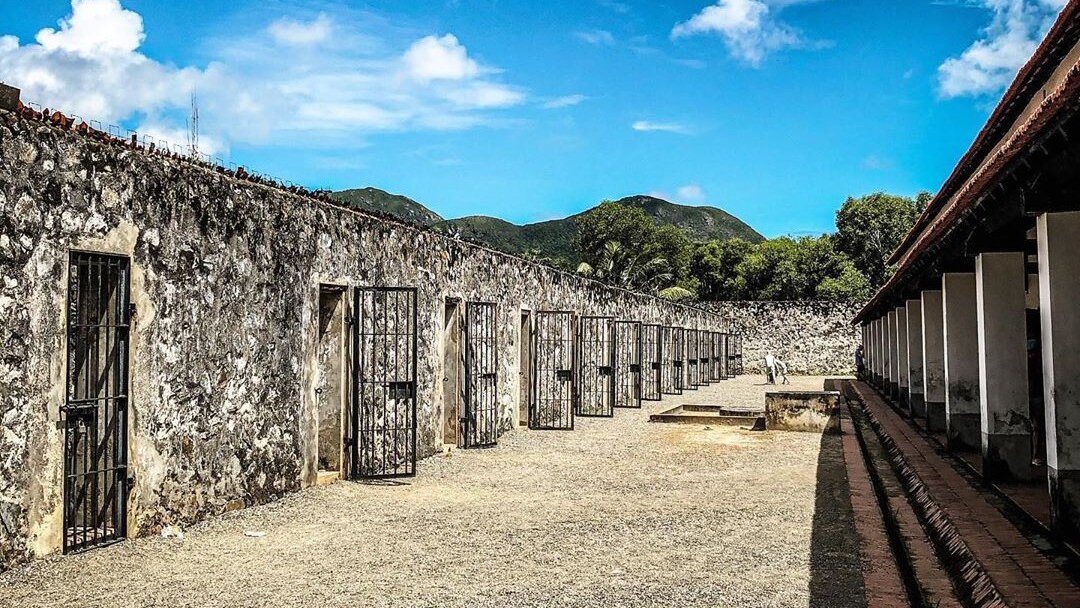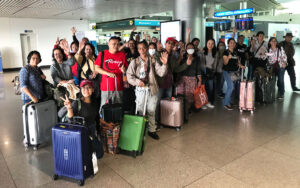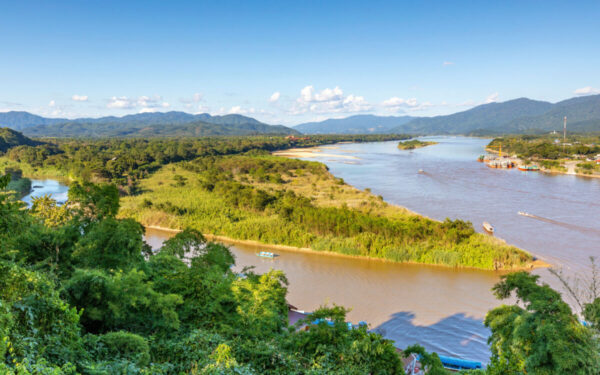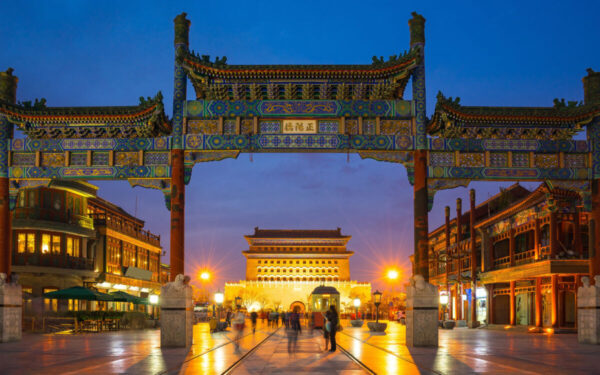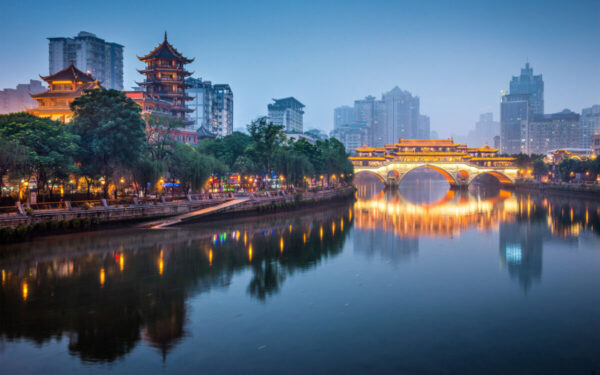Your trip to Vung Tau can be more enriching with a visit to Con Dao Prison. Located on an island near Vung Tau Vietnam, this prison is often referred to as ‘hell on earth.’ It shows the intense history of the Vietnamese wars against French and American forces. If you’re a history enthusiast, especially interested in Vietnamese history, this place is truly one of the must-visit Vung Tau attractions!
Overview of Con Dao Prison
- Address: Nguyen Chi Thanh Street, Con Dao District, Ba Ria – Vung Tau Province, Vietnam
- Ticket Price: VND 50,000 per person (Price for 2024)
- Opening Hours: 7AM – 5PM
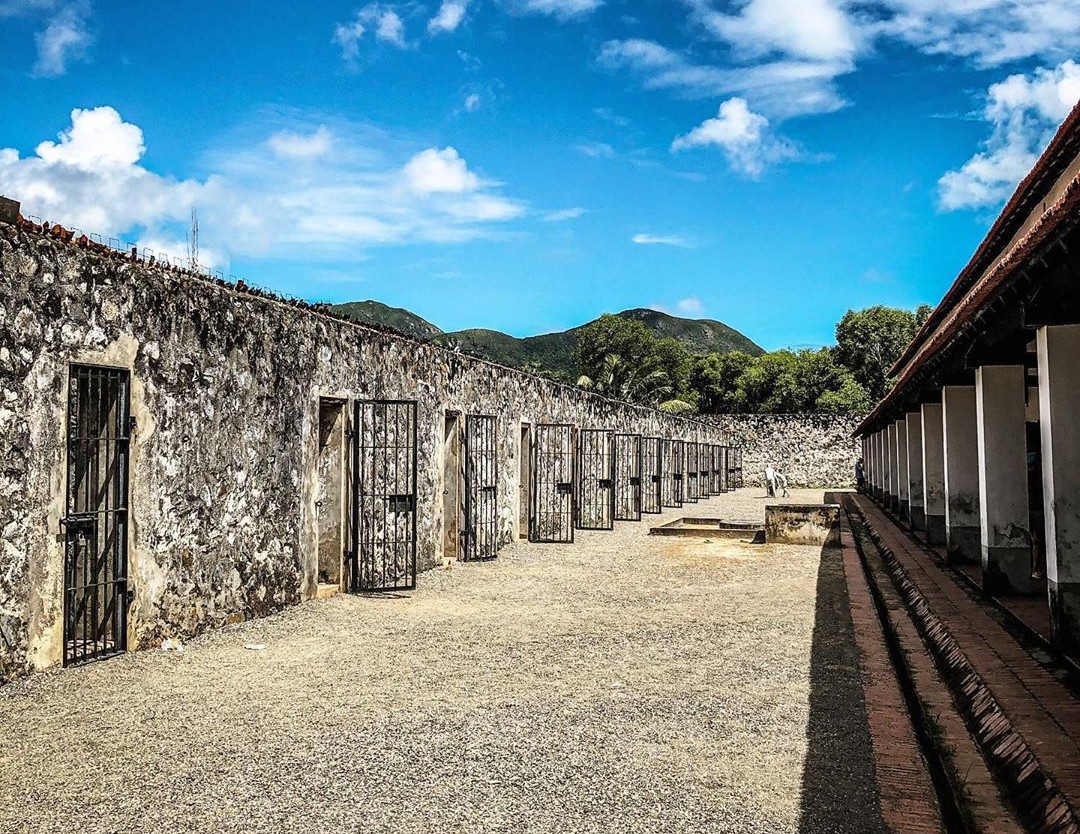
Con Dao Prison (or Con Son Prison, Con Son Island Prison), is a prison complex located on Con Dao Island (also known as Con Son Island, or Con Lon). It was constructed by French colonists to jail individuals considered especially dangerous to the French colonial administration, including many notable Vietnamese leaders. The prison was later used by the United States as a detention center for war captives throughout the Vietnam War.
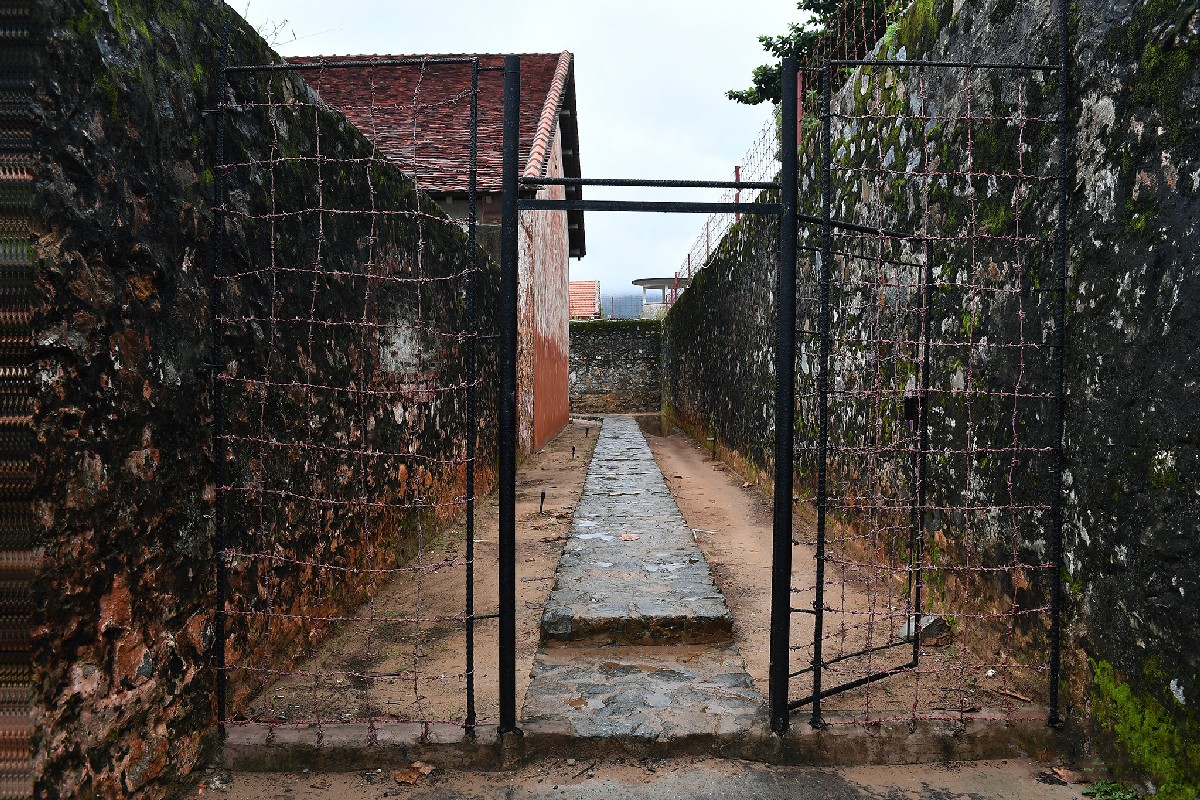
During its operation, the French colonial government and the US-supported Vietnamese government constructed 127 detention rooms, 42 cells, and 504 solitary confinement rooms within this prison. Notably, the solitary confinement area, infamously known as the “tiger cage” area, has records of severe torture of prisoners by both the French colonists and the US-supported Vietnamese government.
After the reunification of Vietnam in 1975, the Con Dao prison system was shut down. In 1979, the Con Dao Historical Relic was recognized as a national relic, consisting of 17 component relics. By the year 2012, the government designated the Con Dao Prison as a Special National Site.
How to Get to Con Dao Prison
The journey to Con Dao prison has two parts: getting to Con Dao Island, and then reaching the Con Dao prison.
Get to Con Dao Island
The airplane is the quickest way to reach Con Dao. Currently, the Con Dao airport only receives direct flights from Vung Tau city, Ho Chi Minh city, and Can Tho. The town center is about 15 km from the airport, and you can get there by motorbike or taxi.
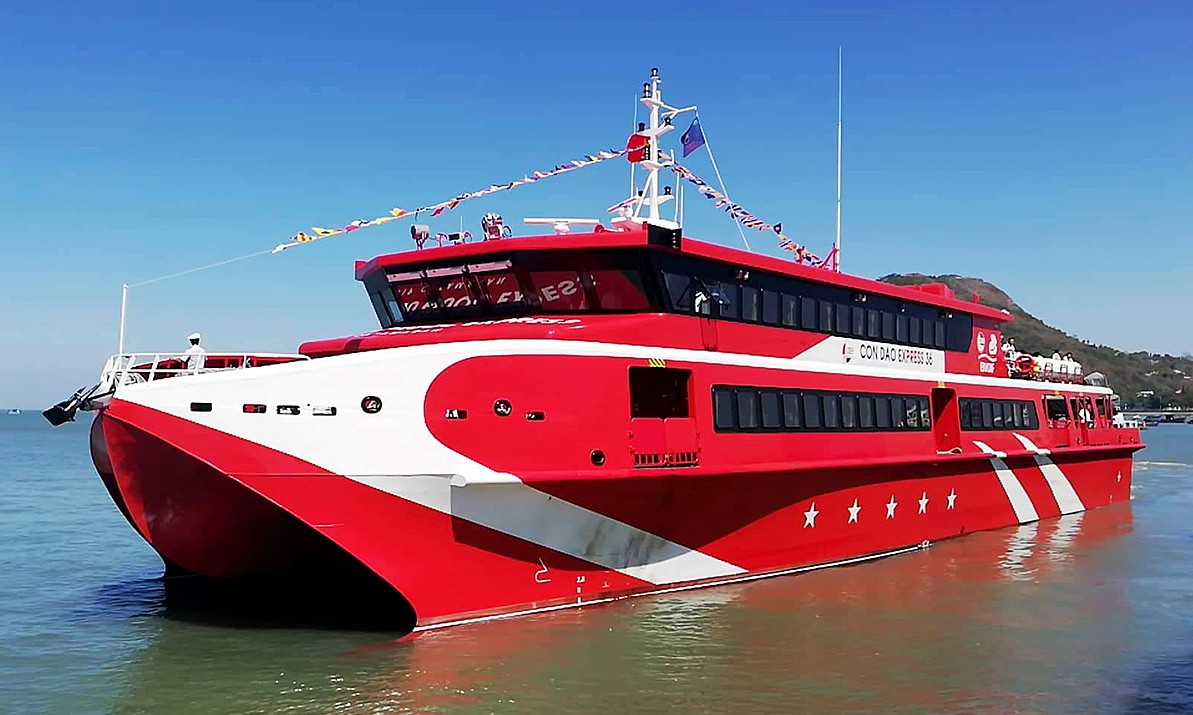
If you don’t mind taking a boat, the best time to visit Con Dao is from April to June when the sea is calmest. Many tourists choose to drive to Vung Tau and then take a 5-hour boat ride to Con Dao. A quicker option is to take a boat from Tran De port in Soc Trang straight to the island, which only takes 2 hours, saving more than half the time compared to departing from Vung Tau.
Get to Con Dao Prison
The Con Dao Prison Relic is located in the center of the Con Dao district, making it accessible by various modes of transportation such as motorbikes, taxis, electric cars, or bicycles. Among them, the motorbike is a cost-effective and flexible option, ideal for visiting other local attractions. Besides, a taxi or an electric car is a good choice to save time and enjoy the scenic route.
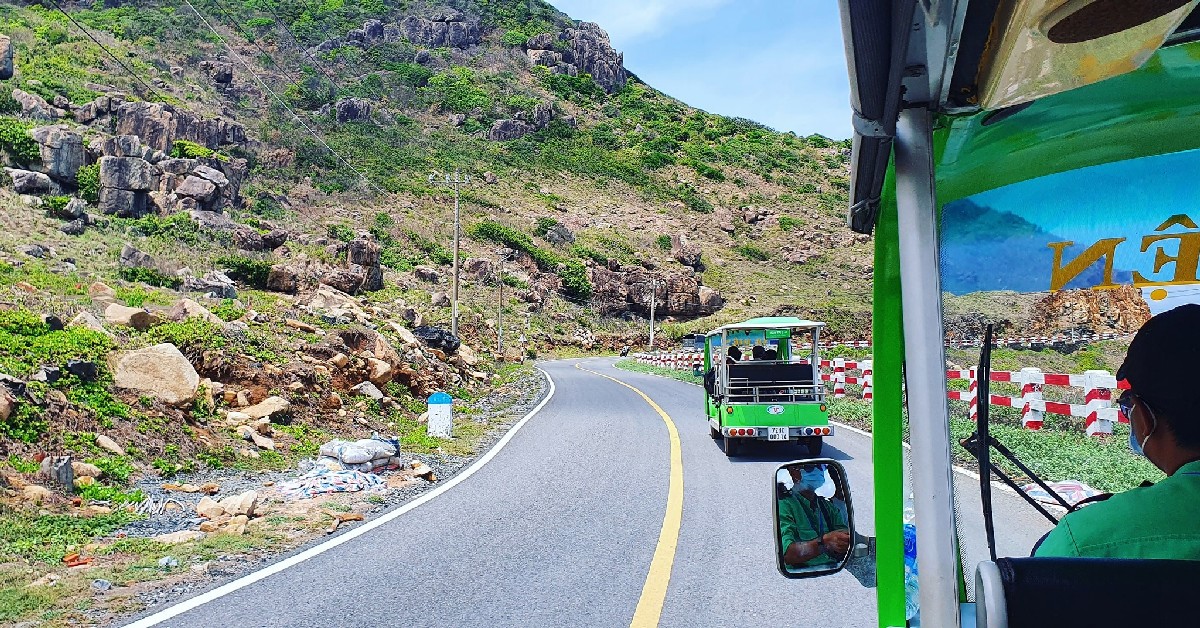
Below are the directions to get to Con Dao prison:
- From Con Dao Market, go straight and turn left onto Tran Phu Street.
- Follow Tran Phu to a junction, then turn right.
- After a bit, turn left onto Nguyen Hue Street.
- At the end of Nguyen Hue, turn onto Nguyen Chi Thanh Street. You’ll see the prison here.
The History of Con Dao Prison
Con Dao Prison, often referred to as “hell on earth,” was an infamous site of torture and imprisonment for political prisoners during the resistance against French colonialists and American imperialists. It was known as the harshest prison in Indochina at the time. The construction of Con Dao Prison started on November 28, 1861, just four months after French colonialists occupied Vietnam. The French selected Con Dao Island for its isolation, roughly 100 miles away from the mainland, with limited transportation, making escape almost impossible.

Within six months of its establishment, the first 50 prisoners were exiled to Con Dao in March 1862. The number of prisoners continued to increase, reaching over 600 by July 1867. Over the initial 50 years, the prison population hovered around 1,000 people.
During the time of French colonial rule, especially after the 1940 Cochinchina uprising, nearly every cell at Con Dao Prison was full. In just the years 1941 and 1942, about 20 prisoners were killed each day due to severe torture.
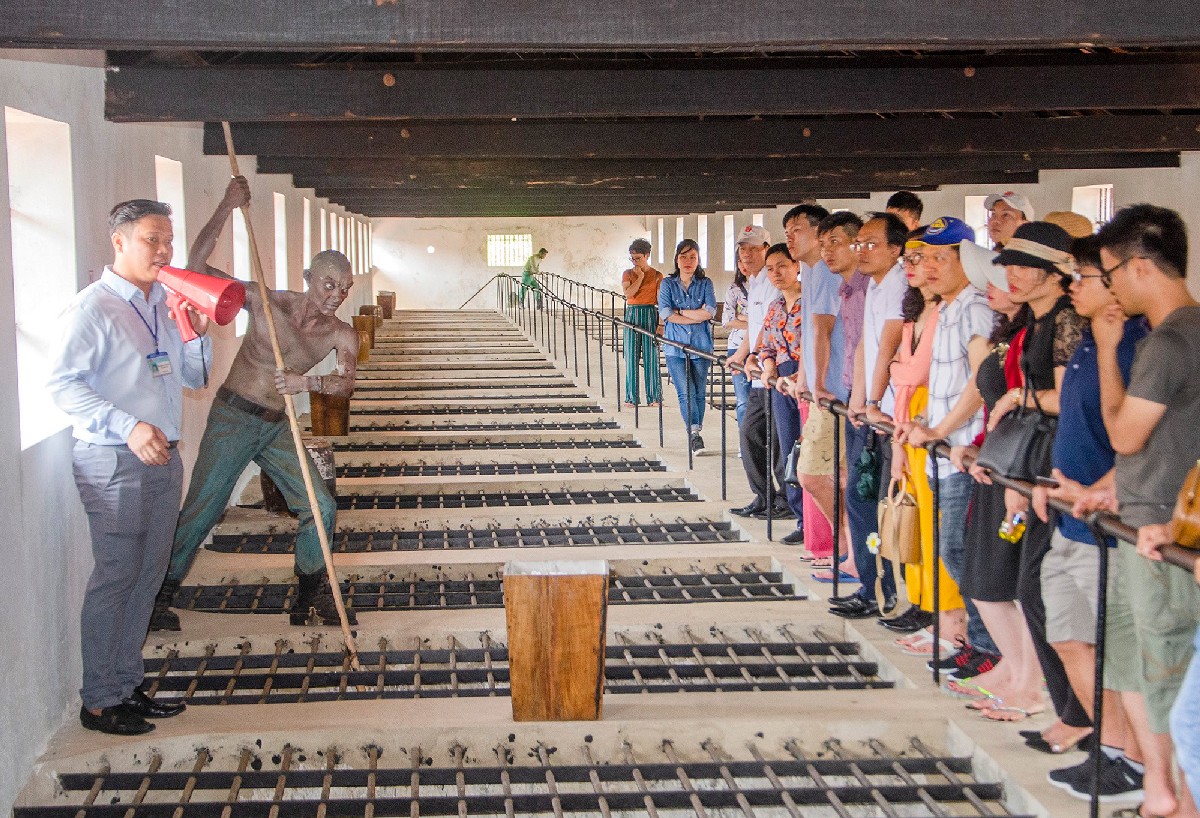
Following the victory of the August Revolution in 1945, political prisoners at Con Dao Prison staged an uprising, took control, and returned to the mainland to continue the resistance. However, when the French reoccupied Con Dao Island in 1946, they resumed their practice of sending prisoners there. The first ship transferring prisoners to the island carried over 300 individuals, 56 of whom were killed on the afternoon of May 27, 1946.
When the French withdrew, the US-supported Saigon authorities assumed control of Con Dao Prison. This brutal regime intensified its cruelty, reaching a peak between 1970 and 1972. During this period, Con Dao Prison jailed nearly 10,000 people and utilized a range of severe torture methods.
On May 1, 1975, Con Dao Island was liberated. The prison staff and their families locked the prison buildings and evacuated. Soon after, the prisoners escaped, marking the end of the prison’s operations. Today, the Con Dao Prison has been transformed into a tourist site.
The System of Con Dao Prison
Con Dao Prison is not a single facility, but a system of camps scattered across the island, each known for its harsh conditions. Today, the Con Dao Prison relic comprises 17 distinct areas, with the tiger cages being the most significant. Join us at Asia Legend Travel as we explore some of these notable spots.
French-Made Tiger Cage
In Con Dao Prison, the ‘tiger cage’ area was deliberately hidden by the French colonial regime. This was due to its ‘prison within a prison’ structure, as it was surrounded by other camps. The reason for this secrecy was the severe violation of human rights that occurred there, a fact the French colonists and the government of the Republic of Vietnam sought to conceal.
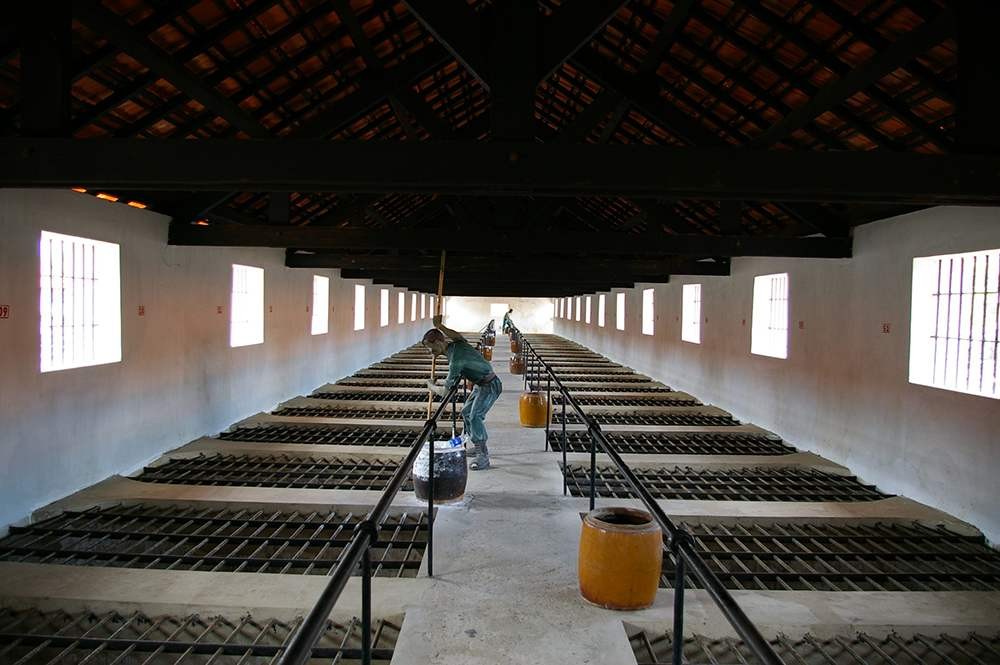
- Construction year: 1940
- Total area: 5,475 m²
- Cell area: 1,408 m²
- “Sunbathe” cell area: 1,873 m²
- Empty space: 2,194 m²
- This cage consists of: 120 solitary confinement rooms (divided into 2 regions, each has 60 cells).
- Basic characteristic: The top of each tiger cage has an iron grid installed, and has a border between two regions which is a road for wardens.
- Additionally, there are 60 cells without roofs, known as “sunbathe” cells. These are used to torture inmates by forcing them to “sunbathe” themselves.
The French-built tiger cage was not equipped with a main gate, only having small doors leading to the Phu Tuong and Phu Tho camps. These doors were often hidden during foreign delegation visits to Con Dao Prison to mislead the press and global public opinion. Around 1962-1963, the Saigon authorities constructed an additional camp, Camp 5, in front of the tiger cage as a shield. This camp also had a small door leading to the tiger cage area.
Phu Hai Camp
Phu Hai Camp, the largest and oldest prison in Con Dao, was established in 1862 and renovated in 1896. Known as the starting point of the “hell on earth,” it has witnessed various historical periods.

The camp covers over 12,040 m², including two rows of twenty cells, an infirmary, a chapel, an auditorium, a rice milling cellar, a rock-forming area, a club, a garden, a barbershop, a kitchen, and a dining room. All these structures are surrounded by walls over 4 meters high, with guard posts positioned around.
US Tiger Cage – Phu Binh Camp
The US tiger cage, also known as Camp 7 or Phu Binh Camp, was built by the United States and the Republic of Vietnam.
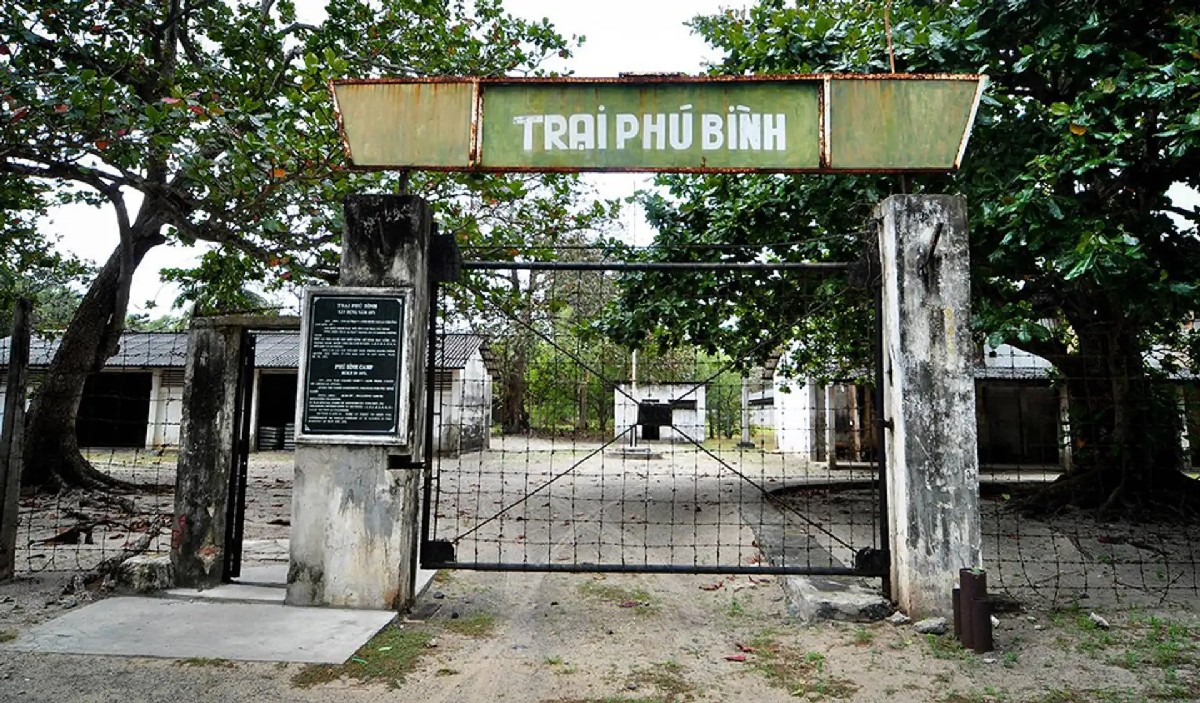
Construction year: 1971
Total area: 25,768 m²
Including:
- Cell area: 3,800 m²
- Outbuildings: 673 m²
- Residential area: 173 m²
- Empty space: 22,369 m²
It comprises 384 solitary confinement cells, divided into 4 areas (AB-CD-EF-GH). Each area has two rows, with each row containing 48 cells.
Characteristics: This unique concrete prison was not equipped with beds, forcing prisoners to lie on the damp cement floor.
This camp holds historical significance as the site where political prisoners first rebelled. This occurred at midnight on April 30 (Vietnamese Reunification Day) and dawn on May 1, 1975 (in the GH area). The prisoners took control of the Con Dao prison, marking the end of its 113-year operation.
Cow Shed
Established in 1876, the Cow Shed was initially constructed to meet the prison administration’s livestock needs. It housed various farm animals and was sometimes used as a reclaiming area. The original design included two cow sheds and a manure pit. This pit, three meters deep and divided into two compartments, was connected to the sheds via a sewer system. The facility also included 24 pigsties. By 1930, the French colonialists added nine prison rooms, converting the Cow Shed into a women’s prison. They also used the manure pit as a torture chamber.
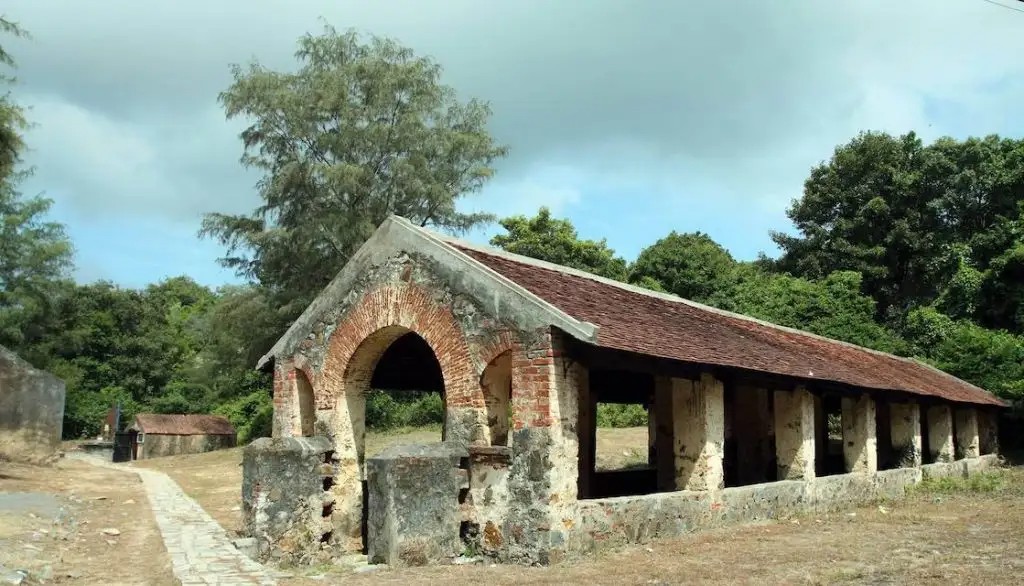
During the Republic of Vietnam’s administration, the Cow Shed maintained its earlier purpose. In 1963, urgent renovations transformed the 24 pigsties into three detention areas (A, B, C), each containing 33 solitary confinement cells. The Cow Shed area was the final liberation zone, marking the end of 113 years of “Con Dao the Hell on Earth” at around 8 am on May 1, 1975.
Adjacent to the Cow Shed lies the “Human Skull Ground,” the first cemetery at Con Dao Prison. The initial prisoners who attempted to escape during the prison’s early days were executed and buried here. Notably, 20 individuals were buried alive. The Hang Keo and Hang Duong cemeteries, which are the final resting places for those who died at Con Dao Prison, are also located nearby.
Chua Dao Palace (The Governor’s Palace)
Covering a total area of 18,600 m², the area was once the residence and workplace for 53 generations of governors, or “Island Lords,” during the operation of Con Dao Prison. These included 39 governors during the French colonial period and 14 during the American imperial period. Since Reunification Day in 1975, the Governor’s Palace has been repurposed to display exhibits of Con Dao’s historical relics.
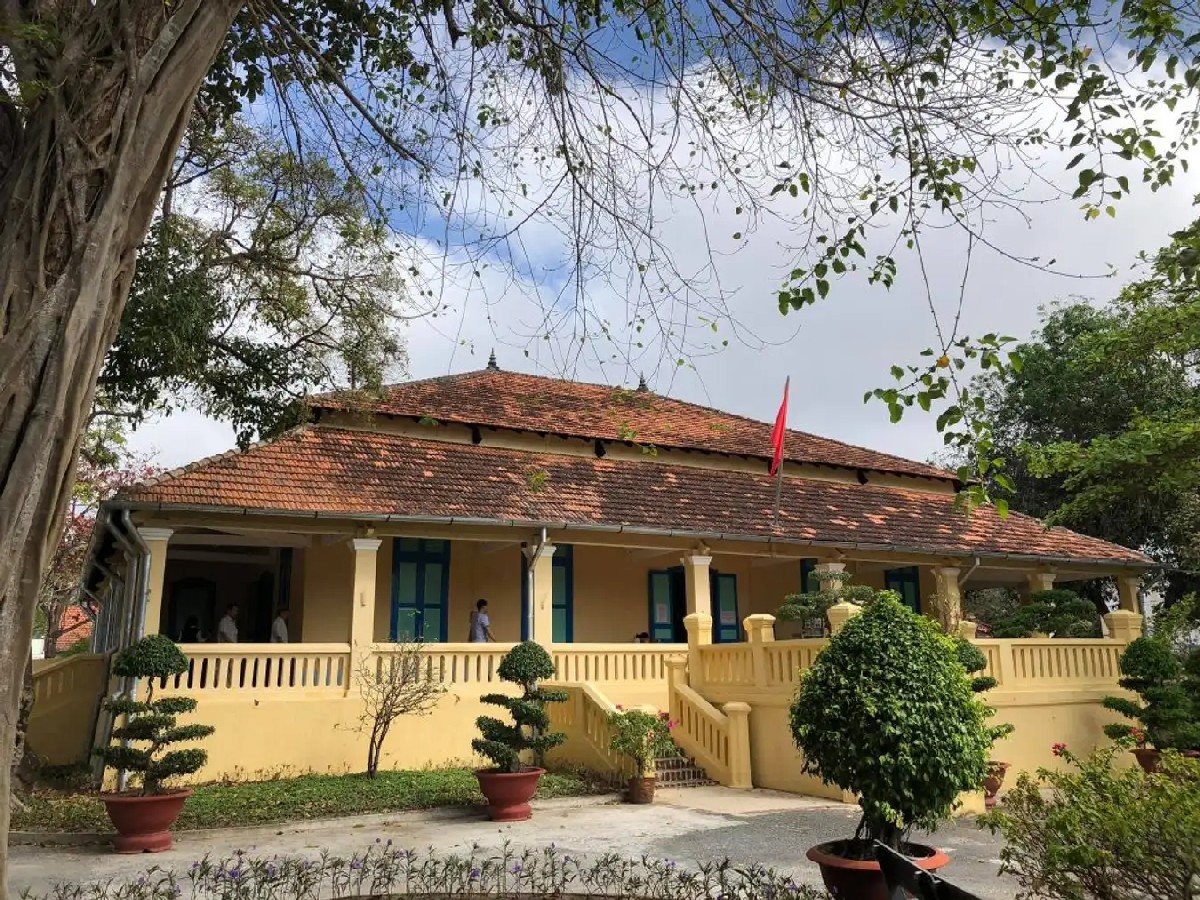
Pier 914 Con Dao
Pier 914 in Con Dao, measuring 130 meters in length and 4.8 meters in width, was constructed in 1873. It is situated more than 110 meters from the Governor’s Palace, facing Con Son Bay.

This site holds historical significance as it witnessed the first hardships of those exiled to the island, many of whom never returned to the mainland. The number 914 symbolizes the prisoners who tragically perished from epidemics and accidents during the grueling construction of the pier.
Hang Duong Cemetery
Hang Duong Cemetery is a resting place for independence fighters and prisoners from Con Dao Prison. This site holds great significance for many Vietnamese people, war veterans, and former prisoners who visit the island to pay their respects to the fallen. Although many of the graves are unmarked, some are numbered and notable, such as those of Le Hong Phong, Nguyen An Ninh, and Vo Thi Sau.

Why is Con Dao Prison referred to as “the Hell on Earth?”
Con Dao Prison, known as a “hell on earth,” was a place of immense suffering for numerous revolutionary fighters and patriots across several generations. Spanning 113 years from 1862 to 1975, the prison was utilized by both French and American forces to incarcerate and torture prisoners.
War Crimes of the French Colonists
If the Con Dao prison is infamously dubbed “hell on earth,” then the rice milling area within it is known as the “hell within hell.” This was where prisoners endured grueling labor for 12 hours daily in a cramped cellar. The mill was designed to accommodate six prisoners at a time, each shackled and burdened with a weight of 5 kilograms, and forced to work amid straw, dust from husks, and the relentless noise of the grinding machine.
Under French administration, prisoners were treated harshly according to the seasons. In hot weather, they were cruelly packed about 7-8 people into a small cell, making breathing difficult due to the stifling conditions. During the cold weather, they kept only 1-2 people per cell, leaving the prisoners lacking in warmth and subjected to the cold.
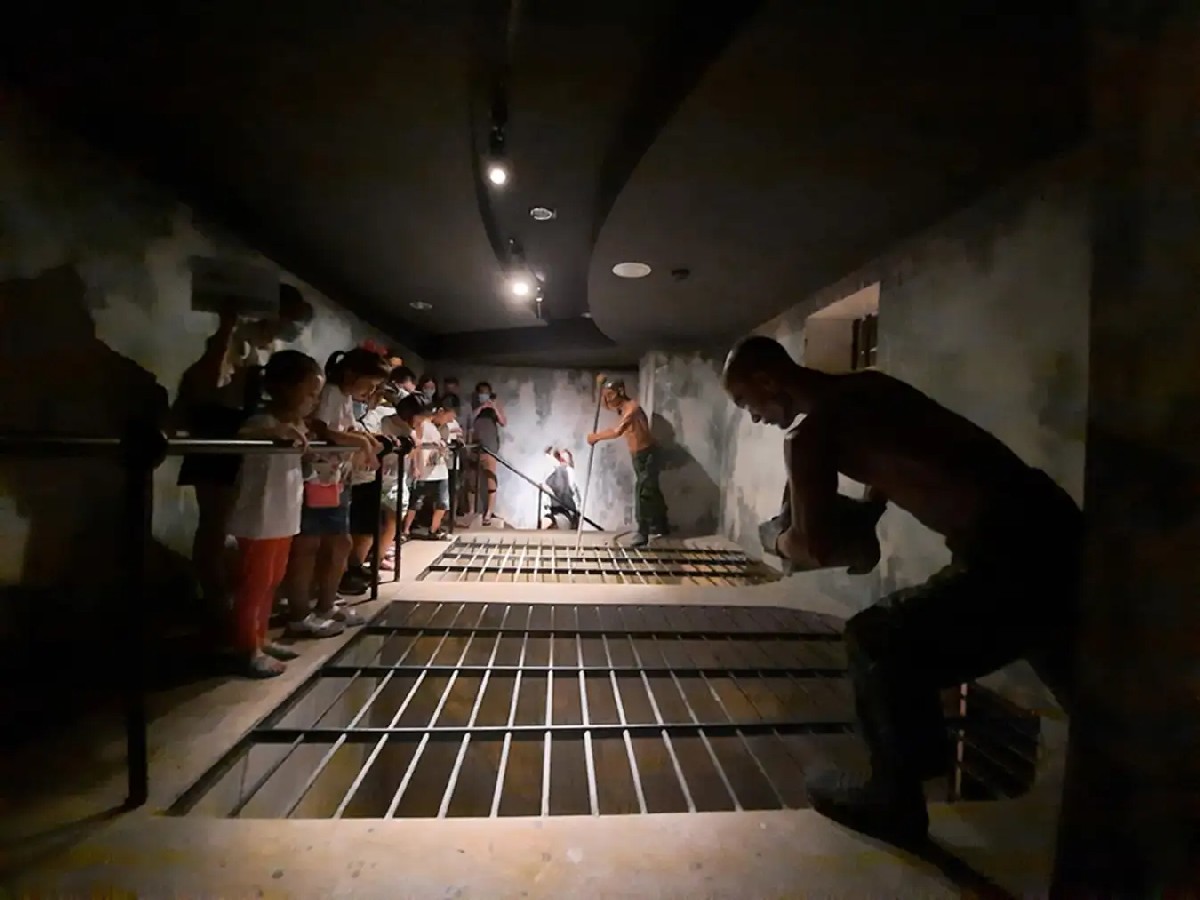
However, the most disturbing feature of Con Dao prison during the French administration was the tiger cages. Prisoners were brutally beaten and disoriented before being confined in the tiger cage area. Inside, they faced starvation, torture, and filthy conditions, compelled to eat, drink, and defecate in the same space.
Each tiger cage was equipped with an iron grid on top and a central path for the jailers. These jailers added to the prisoners’ suffering by spreading calcium hydroxide powder and dousing them with water, leading to skin blisters and ulcers. At night, the jailers poured dirty water into the cages, causing disease outbreaks. Any noise from a cell would prompt a jailer to jab a bamboo pole with a steel tip into the “tiger cage,” resulting in prisoners suffering from broken bones and bleeding. In such a confined space, prisoners had no means of avoiding this.
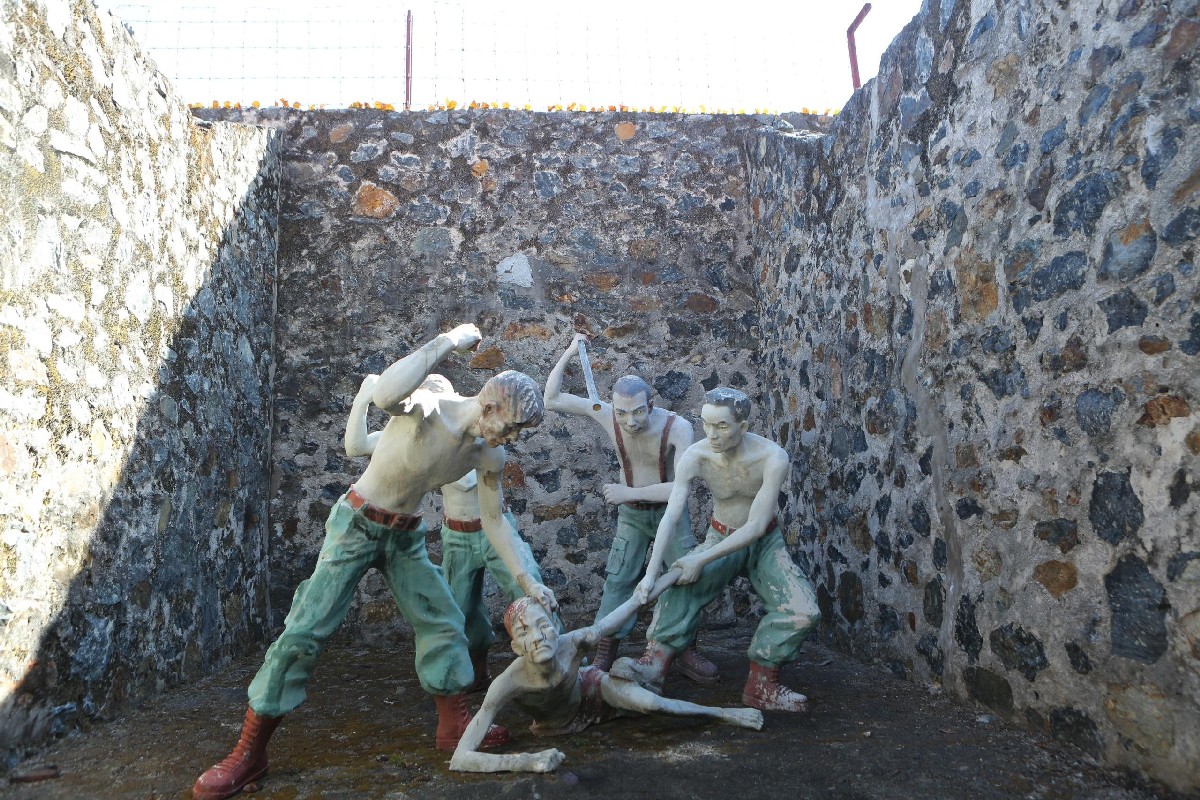
The Con Dao Prison tiger cages also included roofless prison rooms, referred to as “sunbathing rooms.” These rooms were another form of torture, where prisoners were exposed to extreme weather conditions like intense sun or heavy rain, or were brutally beaten and tortured.
War Crimes of American Imperialists – South Vietnam Goverment
Unlike the French-style “tiger cages”, American-style “tiger cages” are solitary confinement rooms divided into four sections. Prisoners had to lay on damp cement floors without a designated toilet area, leading to unsanitary living conditions. They also endured scorching heat during the day and cold, wet conditions at night due to a tin roof. The cells were tiny in contrast to a large yard, designed to make prisoners yearn for freedom. If prisoners fought, they were not permitted to empty the sanitation barrels for 3-5 days, sometimes even a week, with the longest duration being 53 days. These harsh conditions often resulted in prisoners falling ill.
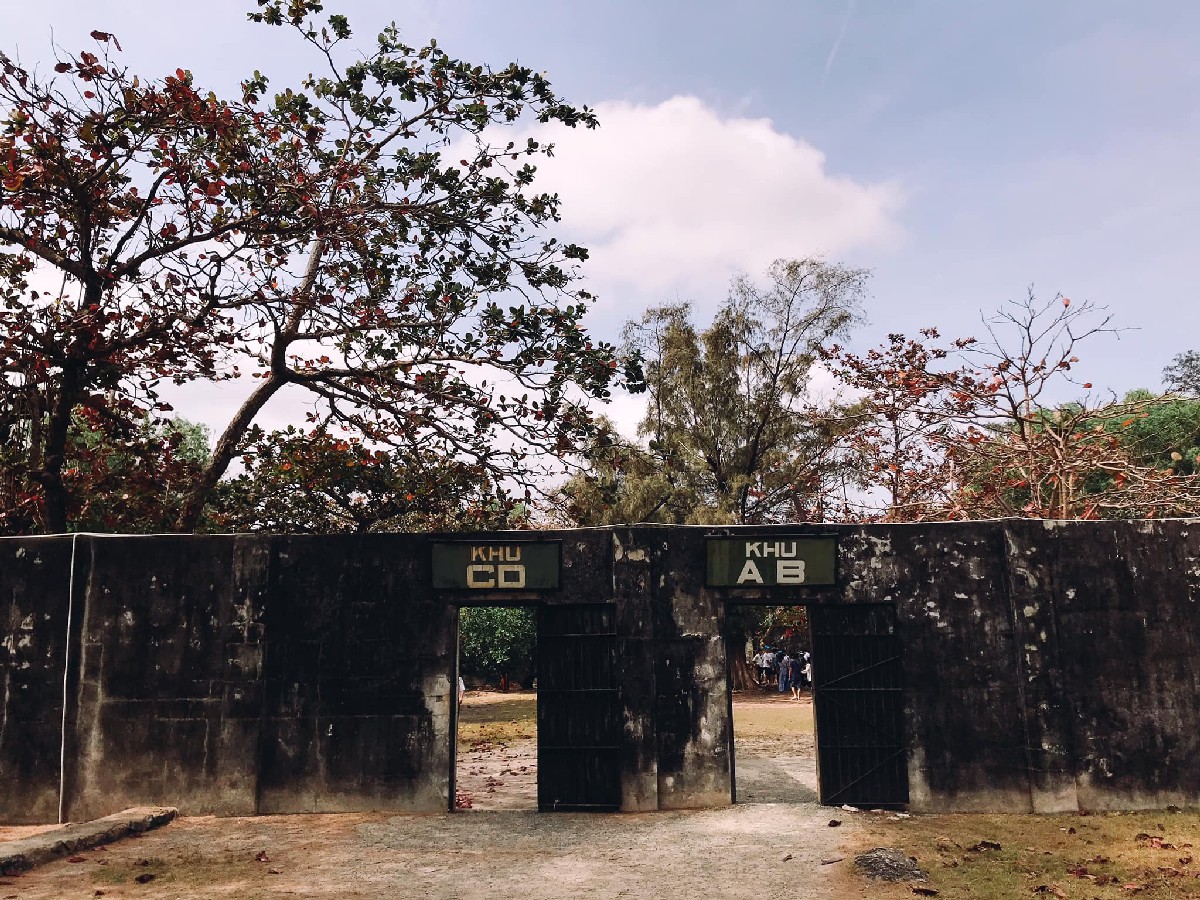
Specifically, prisoners held in the Con Son Island tiger cages endured brutal and inhumane beatings. They were starved, shackled, subjected to severe torture, and forced into hard labor. Numerous horrifying torture methods were used, including skull splitting, finger cutting, electric shocks, among other cruel techniques. The prisoners were treated like animals.
Among the many inhumane torture methods used during this period, the manure pit connected to the cowshed was one of the most shocking. It is said that until 1975, when Con Dao was liberated, locals would hear sounds coming from beneath the manure pit, only to discover that people were being submerged in the filth. When rescued, these prisoners had severe infections. Despite being taken to the mainland for aid, they succumbed to their weakened state and died. This is the last discovered horrifying torture method and serves as solid evidence of the war crimes committed by the US-supported Vietnamese government.
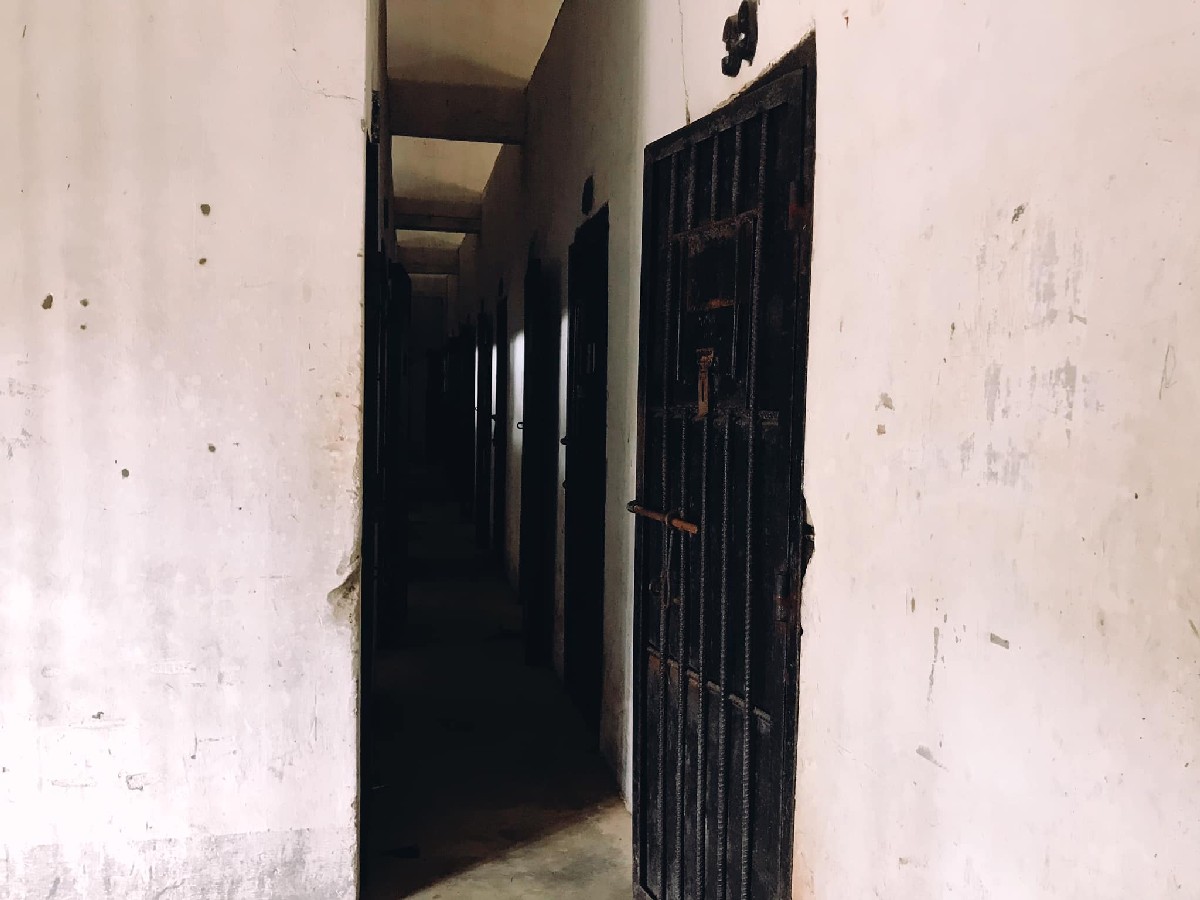
Despite enduring extreme torture, the Communist prisoners remained resilient, maintaining their revolutionary morale. The Day of Liberation of the South on April 30, 1975, marked the conclusion of the tragic yet heroic history of Con Dao Prison. Since then, Con Dao has earned the respect of both local citizens and international friends, transforming into a sacred land that epitomizes Vietnamese Revolutionary Heroism.
The Secret Behind Tiger Cages Revealed
The truth about Con Dao Prison would have stayed hidden if not for the release of five students from Phu Tuong Camp. As the anti-war movement grew, many students who protested the war were apprehended and sent to Con Dao. This sparked both domestic and international calls for their freedom.
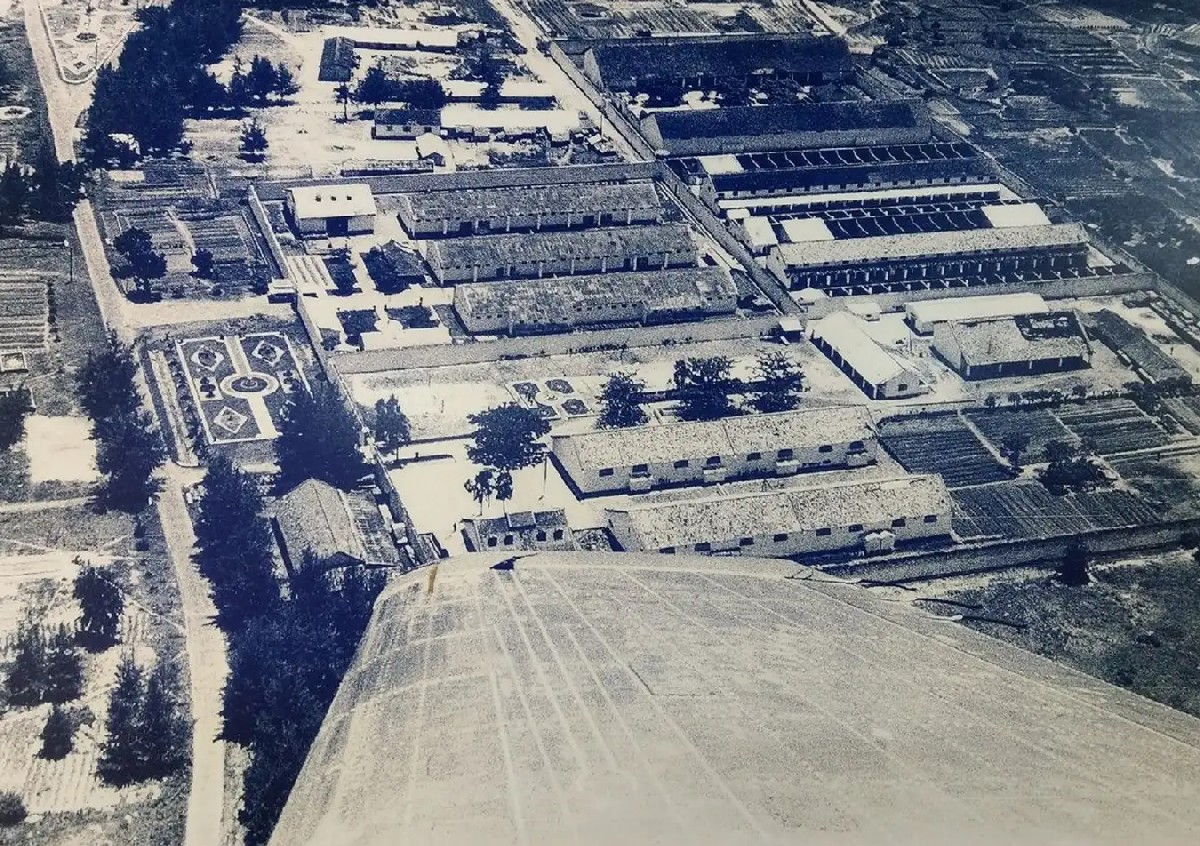
In the meantime, international journalists and public opinion in Vietnam had heard rumors of “Tiger Cage” prisons, but all efforts to find evidence were fruitless. Upon their release and return to Saigon, the five students remembered the location of the Tiger Cage. They drew a map and shared it with keen international journalists.
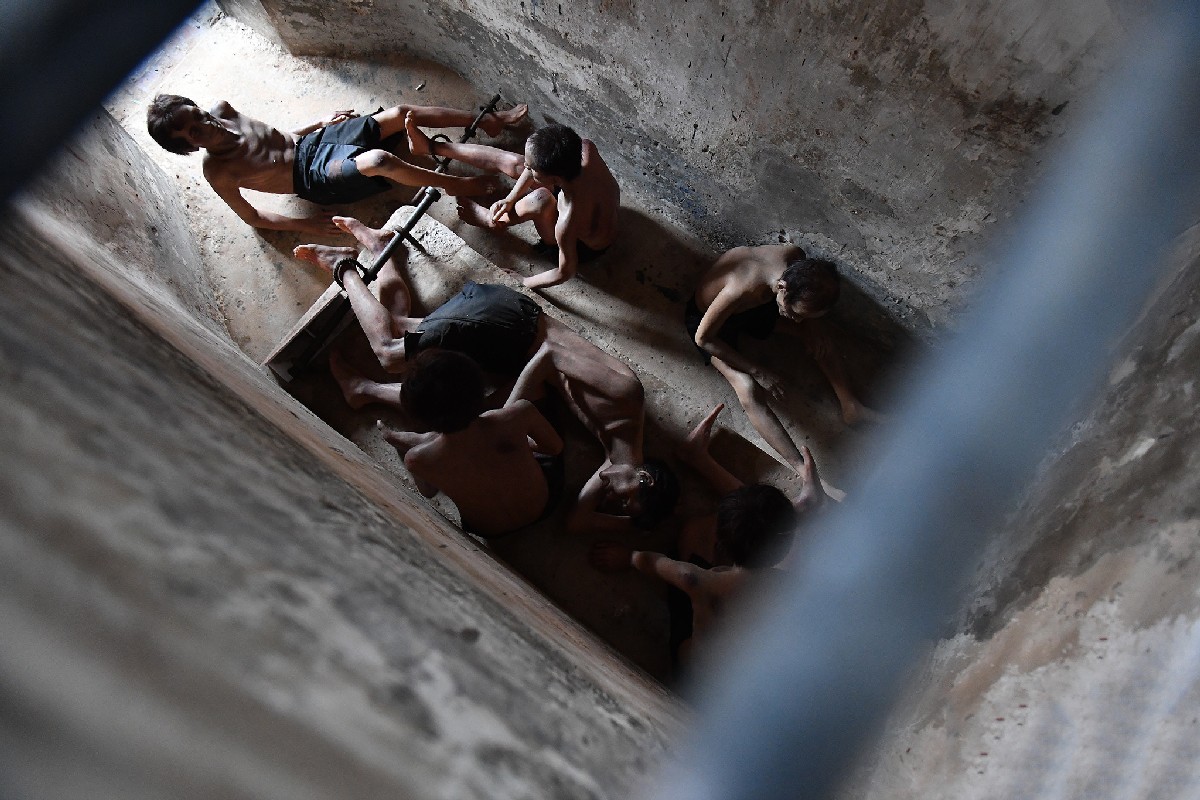
In July 1970, a delegation visited a prison. The delegation included U.S. Congressional Representatives Augustus Hawkins and William Anderson, Tom Harkin (who was an aide at the time), translator Don Luce, and USAID Office of Public Safety Director Frank Walton. With the help of a map drawn by former inmates, they strayed from the planned tour. This led them to a building that a guard opened from inside after hearing their conversation. Inside, they discovered prisoners chained in overcrowded “tiger cages”. The prisoners began crying out and begging for water when seeing the delegation. They had visible sores and bruises, with some being disfigured. Harkin captured the horrific scene in photographs.

Life magazine published photos on July 17, 1970, exposing the horrific conditions and torture suffered by prisoners. This sparked significant international protests. Under global public pressure, 180 male and 300 female prisoners were moved from the tiger cages. Many, suffering from severe psychological trauma, were relocated to mental hospitals, while others were transferred to different prisons.
Practical Tips for Visitors
When visiting Con Dao Prison, please adhere to the following guidelines:
- Dress modestly and respectfully. Avoid wearing attire that might be seen as disrespectful.
- Avoid touching any exhibited artifacts or associated items.
- Consider bringing your own snacks and drinks. Make sure to dispose of any garbage in the provided bins.
- Minimize noise to respect other visitors.
- The Vung Tau weather can be scorching hot, so make sure to drink plenty of water and protect yourself from the sun.
Con Dao Prison, often referred to as “hell on earth” due to its brutal torture methods during its 113 years of operation, serves as a powerful testament of the suffering caused by wars and colonial atrocities, as well as the enduring strength of the Vietnamese people. If you’re visiting Vung Tau, don’t miss the opportunity to visit this significant site. It’s truly one of the best things to do in Vung Tau, making your journey more memorable and fulfilling.
